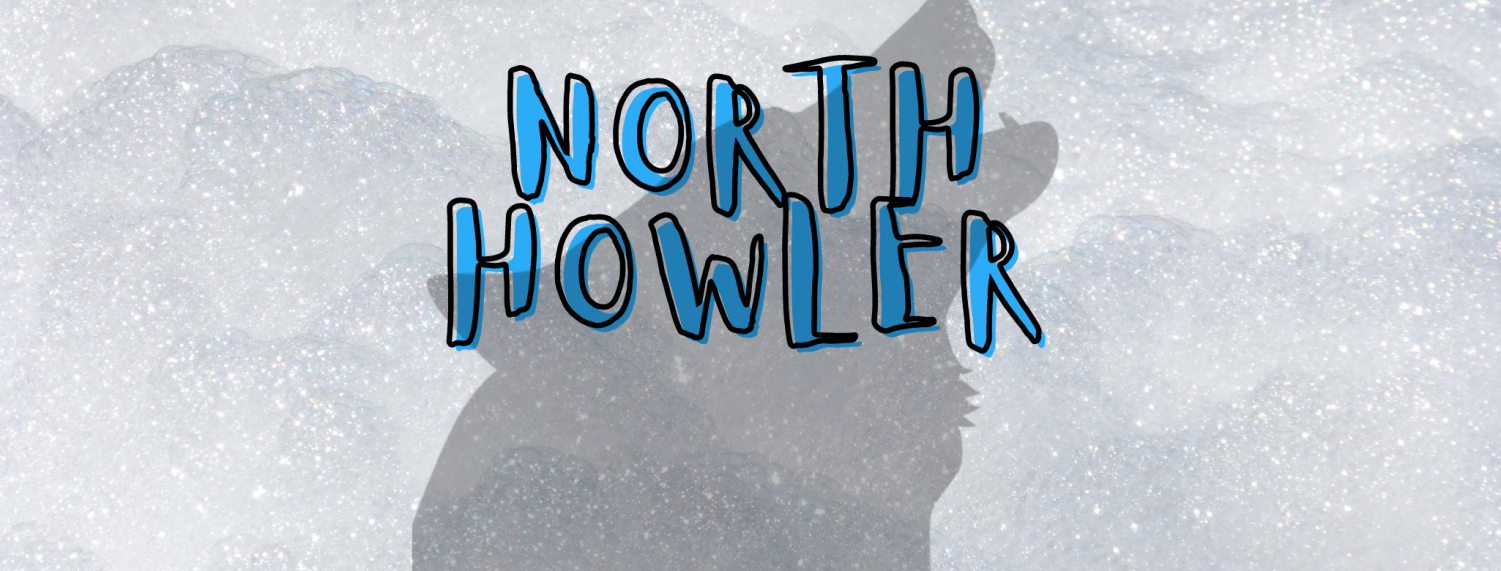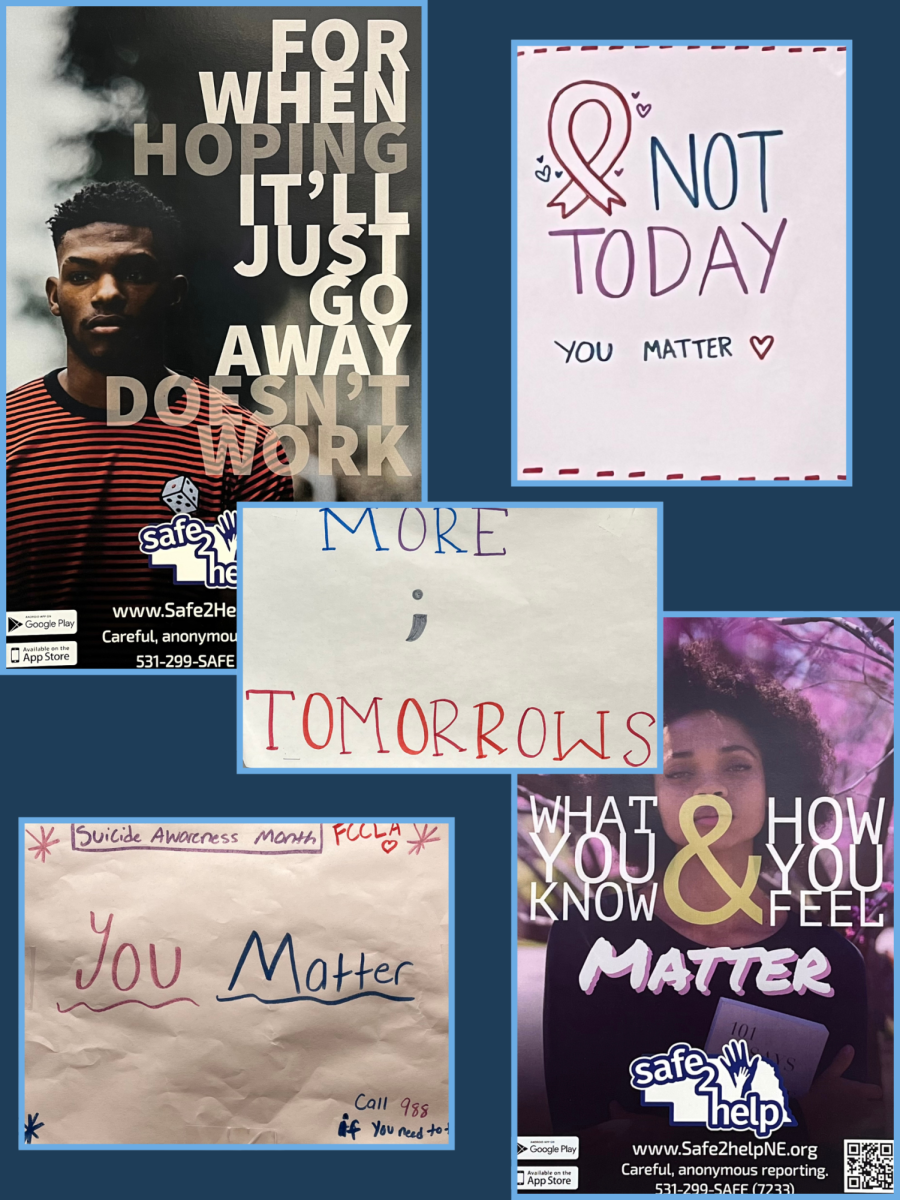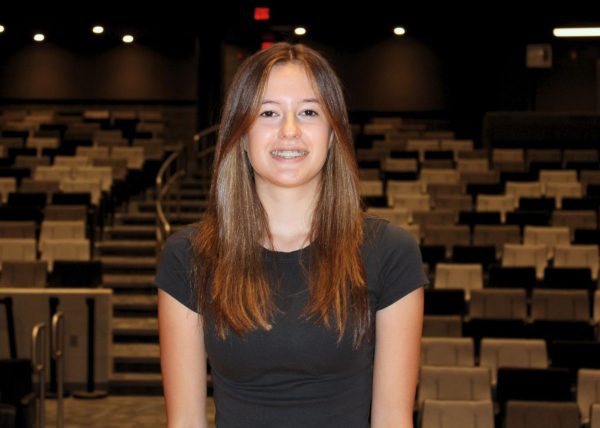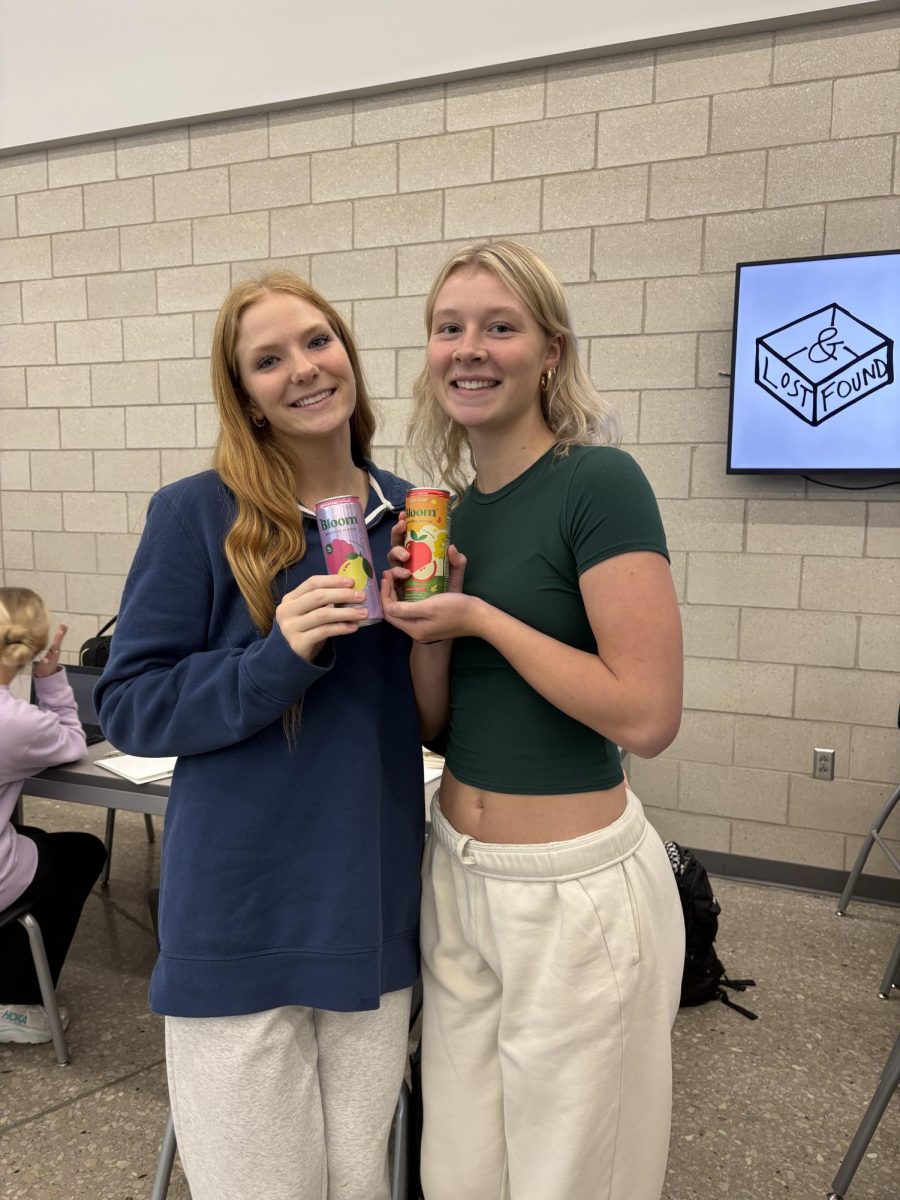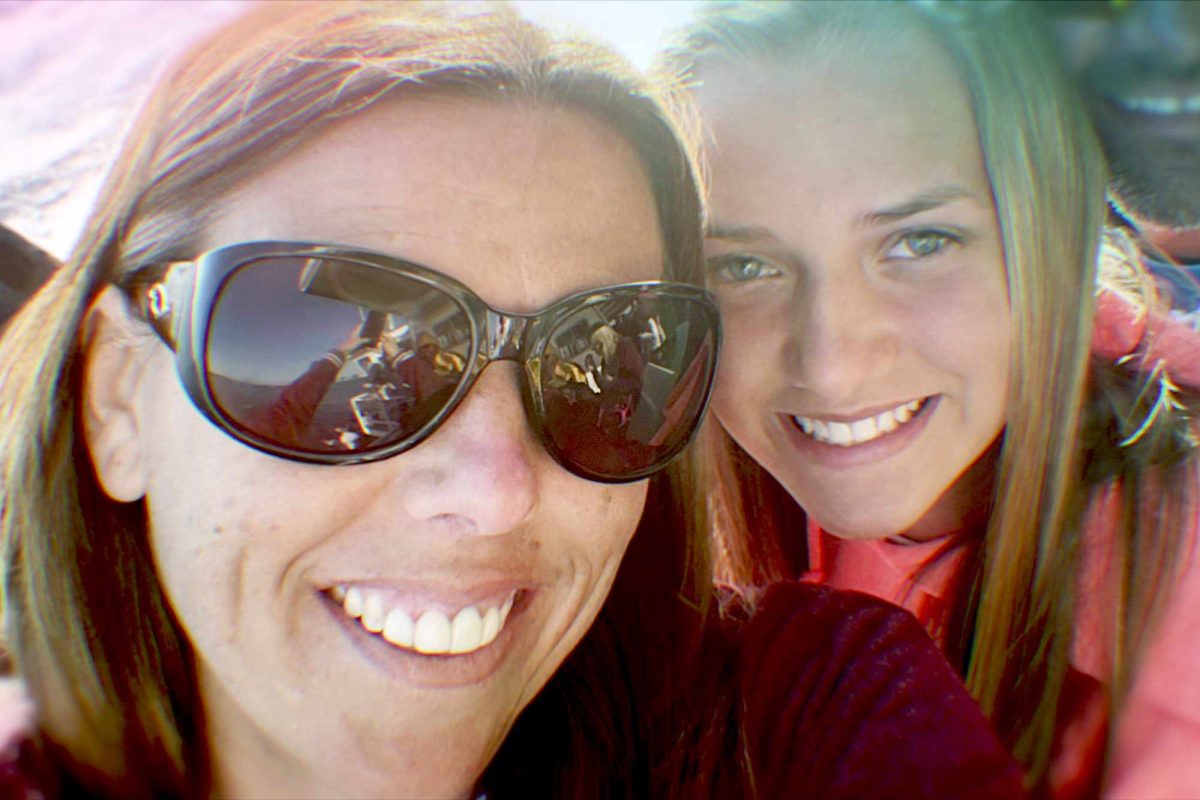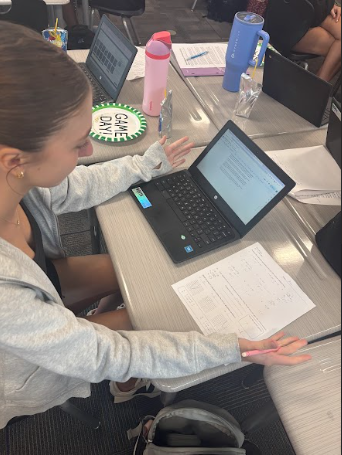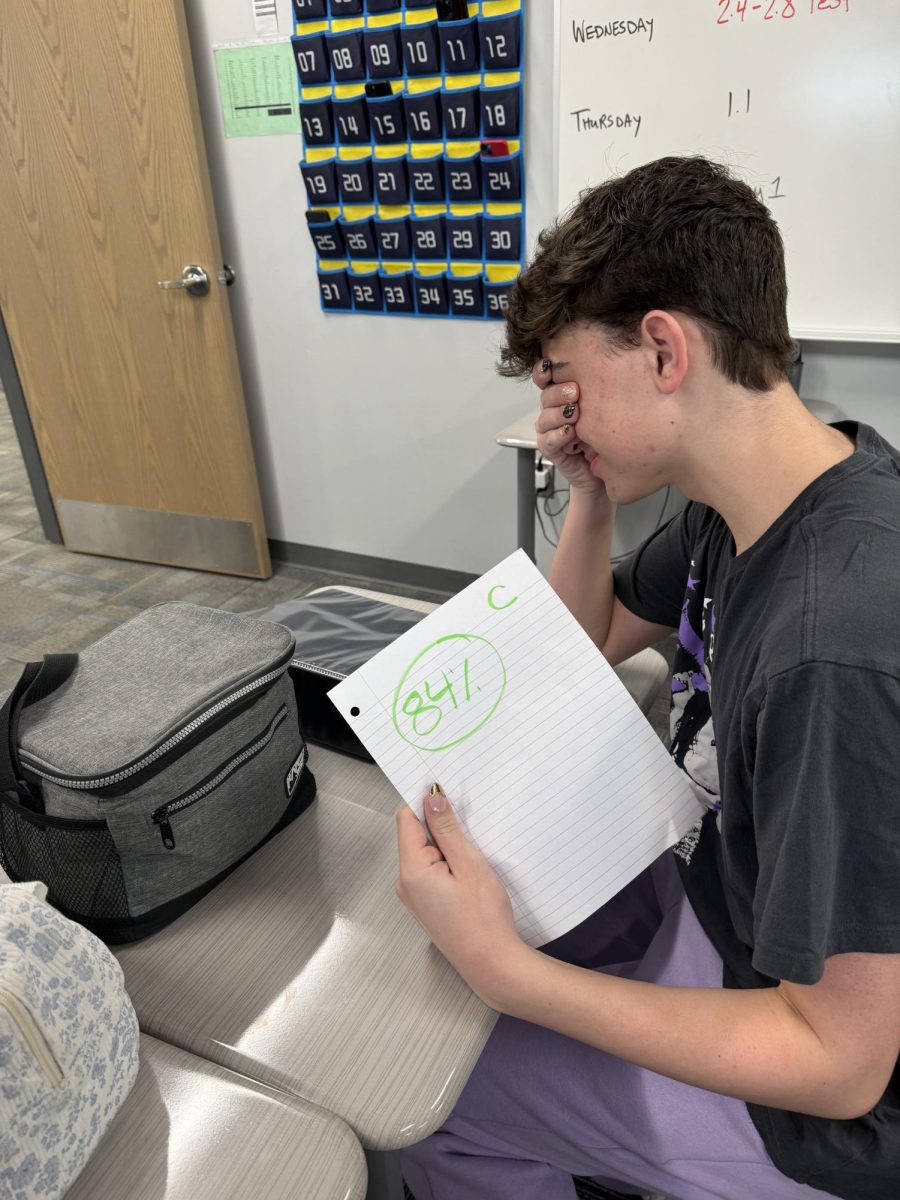According to the Center for Disease Control and Prevention (CDC), 40% of high school students reported feelings of persistent sadness or hopelessness in 2023. The same study showed that 20% of adolescents have mental health needs that aren’t met. Schools across the nation are beginning to wake up to the mental health needs of students, but there is still work to be done.
Within Elkhorn North High School, we have one suicide-prevention group, a few posters promoting positive mental health, and the suicide hotline printed on the back of every student’s lunch card. It’s safe to say that Elkhorn North is still in the development stage to create a better environment for mental health.
The group most actively working to create a safer Elkhorn North is Hope Squad, led by advisor Ashley Anderson and counselor Martha Dowd. Hope Squad focuses on and targets suicide prevention by electing students from all grade levels to be the bridge between students and mental health support.
“We use a program called QPR [Question, Persuade, Refer],” Anderson said. “The idea is you question the person with something like, ‘Are you thinking of hurting yourself?’ or ‘Are you going through something right now?’ and if that elicits a response of ‘Yes, I’ve been really down lately’ or we see something concerning, then we would refer that to an adult.”
Hope Squad has made a lot of progress in the few years the organization has been active at Elkhorn North, but connection between students is still lacking.
The mental health spectrum is a wide range that can be difficult to understand, especially for those who don’t deal with any disorders themselves. Suicide prevention shouldn’t start right before someone attempts; it needs to start with educating students on the signs, symptoms, and ways to manage mental health.
However, every student has a lot going on in their life, whether it be school, work, or various sports. Sitting through wordy presentations or assemblies in times when students would much rather focus on homework or just have a bit of free time is not an effective way to ensure a safe community.
For a safer environment at school, it has to start with the choices students make.
“I think one of the biggest things is that a ton of people here, from my personal experience, don’t really understand mental health problems,” junior Shelby Spitznagel said. “If you mention a condition that you have, or you experience something that isn’t in their little acceptable bubble of mental issues, people get really weird about anything other than high-functioning depression or a little anxiety.”
With high rates of depression, anxiety, and other mental health disorders, some students stuggle more during the school day. Despite this, some students continue to mock and bully others who they deem as odd for simply needing help.
As cheesy as it may sound, just being kind truly makes an impact.
Growing the connection throughout the student body, whether or not people make their struggles known, is the most important action students can take. No one has to be the expert on mental illness, but providing support for those who need it, checking in on friends, or simply not ostracizing someone for having a hard day are only some of the ways to make progress towards better mental health throughout the school.
Another issue is that the bridge between students and resources like the suicide lifeline or Safe2Help is still quite rocky.
“I don’t really like talking to anonymous people about mental health issues, and I’ll never be one of those people,” Spitznagel said. “I’d rather not reach out to an anonymous person that knows nothing about me or wouldn’t have any chance to really understand what I’m feeling.”
Spitznagel is not the only student uncomfortable with the idea of reaching out to someone so unknown. This is where strong relationships between teachers, counselors, and students come into play.
“I think we have a big responsibility of making sure it’s a place that is enjoyable to be in, so it has to be physically safe in terms of relationships with peers and adults,” school psychologist Brittany Sullivan said. “I think human beings just want to feel connected to what they’re doing and involved in, so we can make sure you guys feel as connected as you can to your school building and the people around you.”
Although many students have favorite teachers throughout the building, only 12% of students feel comfortable talking to a teacher about their mental health. Having peers that are unsupportive of struggling students and teachers that don’t feel like a safe place to reach out to creates an environment where students feel like they have to stay quiet about their problems.
Elkhorn Public Schools is one of the most academically, musically, and athletically talented districts in the state of Nebraska. With so many aspects of excellence in our school district, it’s time to see what is lacking. Suicide-prevention week shouldn’t be the only time of the year that we pay close attention to mental health. Education on mental health, bonds between teachers and students, and kindness to all needs to happens year round.

